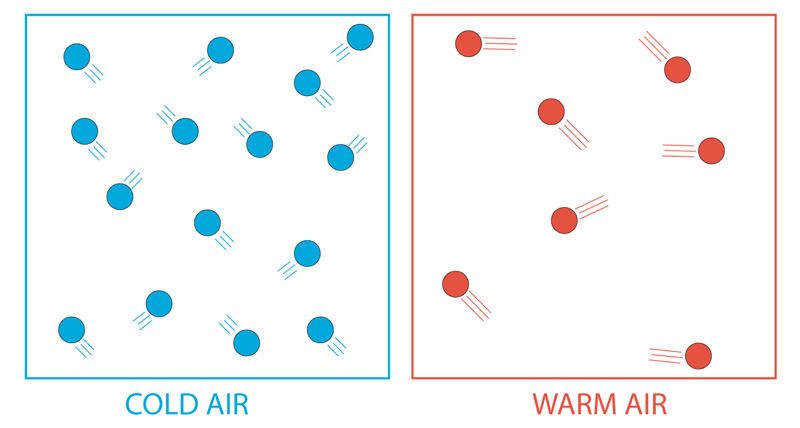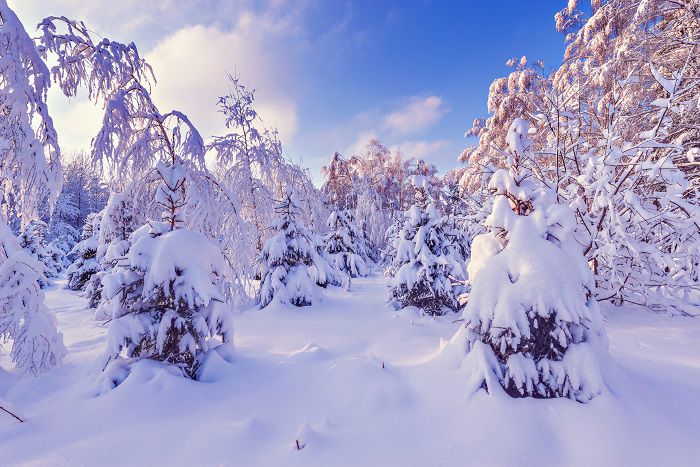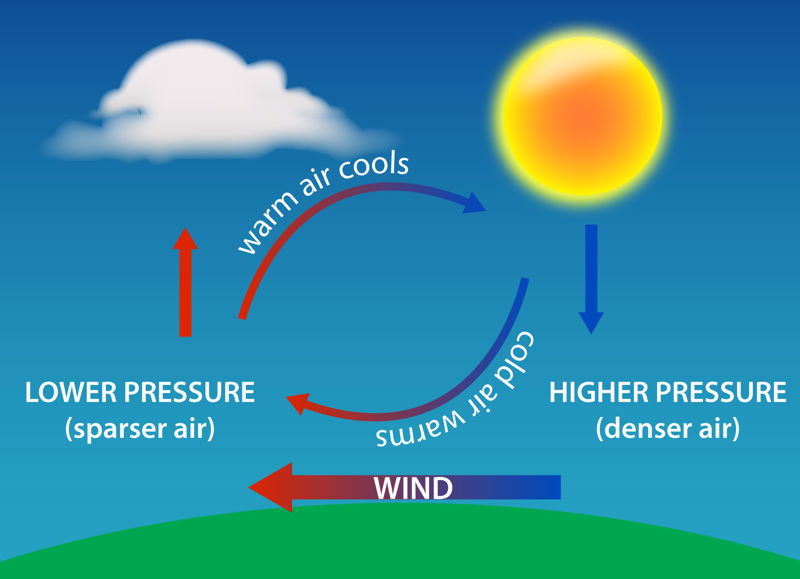High or low pressure?
Air pressure depends on the weight of air, which depends on the density of air, which in turn depends on the air temperature. Therefore, air pressure above the ground is not the same everywhere. Cold air is thicker and therefore heavier, so it exerts more pressure on the ground. As the air warms up, it becomes thinner and lighter, and so the pressure decreases.

When the weather report refers to a low-pressure area, it means the air pressure is lower than in the surrounding areas. As the air in the low-pressure area is thinner and lighter, it rises. As it rises, the air cools, the water vapour in it condenses, and clouds form. Therefore, the weather in the low-pressure area is cloudy or even rainy. The air pressure in the high-pressure area is higher than in the surrounding areas. As the air in the high-pressure area is thicker and heavier, it starts to descend under the influence of gravity. No clouds form, so there is clear weather in the high-pressure area.


- Lighter
- Exerts more pressure
- Thinner
- Heavier
- Exerts less pressure
- Thicker
Differences in air pressure cause wind
As the sun warms the ground, the air above it warms too. However, solar heat is not always distributed equally. Often, the weather is clear and sunny in one place and cloudy in another. Also, during the day, the air heats land faster than the sea.

Different levels of heat in the air cause different levels of air pressure, and therefore the air starts to move above the ground. The denser cold air moves towards the area where the air is thinner, so the air moves from the higher air pressure area to the lower air pressure area. That's how the wind is formed.
- Wind is the vertical movement of air above the ground.
- Wind is the horizontal movement of air above the ground.
- Wind is caused by the fact that the ground warms to different degrees in different areas.
- Air moves from the high pressure areas to the low pressure areas.
- Air moves from the low pressure areas to the high pressure areas.
I now know that…
In high-pressure areas, the air descends, and in low-pressure areas, the air rises. The wind is the horizontal movement of air caused by the differences in air pressure.
